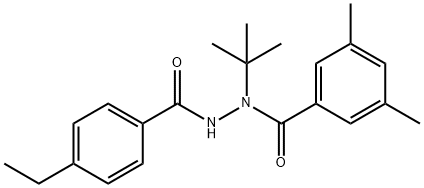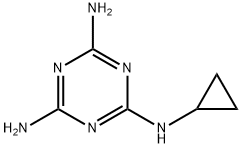Methoprene , Analysis standard reagent , 40596-69-8
CAS NO.:40596-69-8
Empirical Formula: C19H34O3
Molecular Weight: 310.47
MDL number: MFCD00072475
EINECS: 254-993-2
| Pack Size | Price | Stock | Quantity |
| 100mg | RMB1513.60 | In Stock |
|
| others | Enquire |
PRODUCT Properties
| Melting point: | <25℃ |
| Boiling point: | bp0.06 135-136° |
| Density | 0.9261 g/cm3 (20℃) |
| vapor pressure | 3.15 x l0-3 Pa (25 °C) |
| refractive index | 1.4200 (estimate) |
| storage temp. | 0-6°C |
| solubility | Chloroform (Slightly), Methanol (Sparingly) |
| form | Liquid |
| Water Solubility | 1.4 mg l-1 (room temperature) |
| color | Colorless to light yellow |
| BRN | 1913191 |
| InChIKey | NFGXHKASABOEEW-LDRANXPESA-N |
| CAS DataBase Reference | 40596-69-8 |
| EPA Substance Registry System | Methoprene (40596-69-8) |
Description and Uses
Methoprene is the common name for a racemic mixture of two enantiomers (R and S in a ratio of 1:1). The activity of the compound as a juvenile hormone (JH) mimic is restricted to the S enantiomer. Methoprene was the first insect growth regulator approved in the 1970s by the US Environmental Protection Agency after extensive studies showing low toxicity to vertebrates and rapid natural chemical degradation in the environment and through organism metabolism. Nowadays, it is one of the most widely used and successful insect growth regulators. Different products containing methoprene (e.g., pesticides, veterinary drugs) are commercially available in different forms (emulsifiable concentrates, granules, pellets, briquettes, aerosols, or sustained-release formulations). Some of these are applied to water for mosquito control whereas others are sprayed in areas where foods are stored to prevent insect infestations. Methoprene may be used in combination with other active insecticides to optimize pest control.
ectoparasiticide
Safety
| Symbol(GHS) |   GHS07,GHS09 |
| Signal word | Warning |
| Hazard statements | H315-H319-H335-H411 |
| Precautionary statements | P261-P264-P271-P273-P302+P352-P305+P351+P338 |
| Hazard Codes | Xi,N |
| Risk Statements | 36/37/38-51/53 |
| Safety Statements | 26-36-60-61 |
| RIDADR | UN3082 9/PG 3 |
| WGK Germany | 2 |
| RTECS | JR1685000 |
| Hazardous Substances Data | 40596-69-8(Hazardous Substances Data) |
| Toxicity | LD50 orally in rats: >34500 mg/kg (Siddall) |



